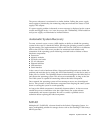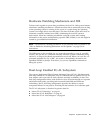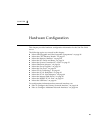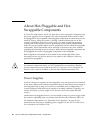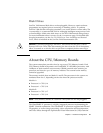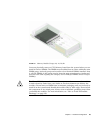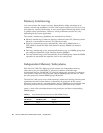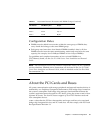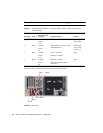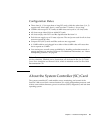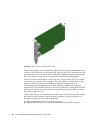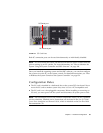
28 Sun Fire V490 Server Administration Guide • August 2004
VIS provides high levels of multimedia performance, including real-time video
compression and decompression and two streams of MPEG-2 decompression at full
broadcast quality with no additional hardware support.
The Sun Fire V490 server employs a shared-memory multiprocessor architecture
with all processors sharing the same physical address space. The system processors,
main memory, and I/O subsystem communicate via a high-speed system
interconnect bus, operating at a clock rate of 150 MHz. In a system configured with
multiple CPU/Memory boards, all main memory is accessible from any processor
over the system bus. The main memory is logically shared by all processors and I/O
devices in the system.
For information about memory modules and memory configuration guidelines, see
“About the Memory Modules” on page 28.
About the Memory Modules
The Sun Fire V490 server uses 3.3-volt, high-capacity dual inline memory modules
(DIMMs). The DIMMs are built with synchronous dynamic random access memory
(SDRAM) chips that operate at a 75-MHz clock frequency. The system supports
DIMMs with 512-Mbyte and 1-Gbyte capacities.
Each CPU/Memory board contains slots for 16 DIMMs. Total system memory ranges
from a minimum of 8 Gbytes (one CPU/Memory board with eight 512-Mbyte
DIMMs) to a maximum of 32 Gbytes (two boards fully populated with 1-Gbyte
DIMMs).
Within each CPU/Memory board, the 16 DIMM slots are organized into groups of
four. The system reads from, or writes to, all four DIMMs in a group simultaneously.
DIMMs, therefore, must be added in sets of four.
FIGURE 3-1 shows the DIMM slots
and DIMM groups on a Sun Fire V490 CPU/Memory board. Every fourth slot
belongs to the same DIMM group. The four groups are designated A0, A1, B0, and
B1.




